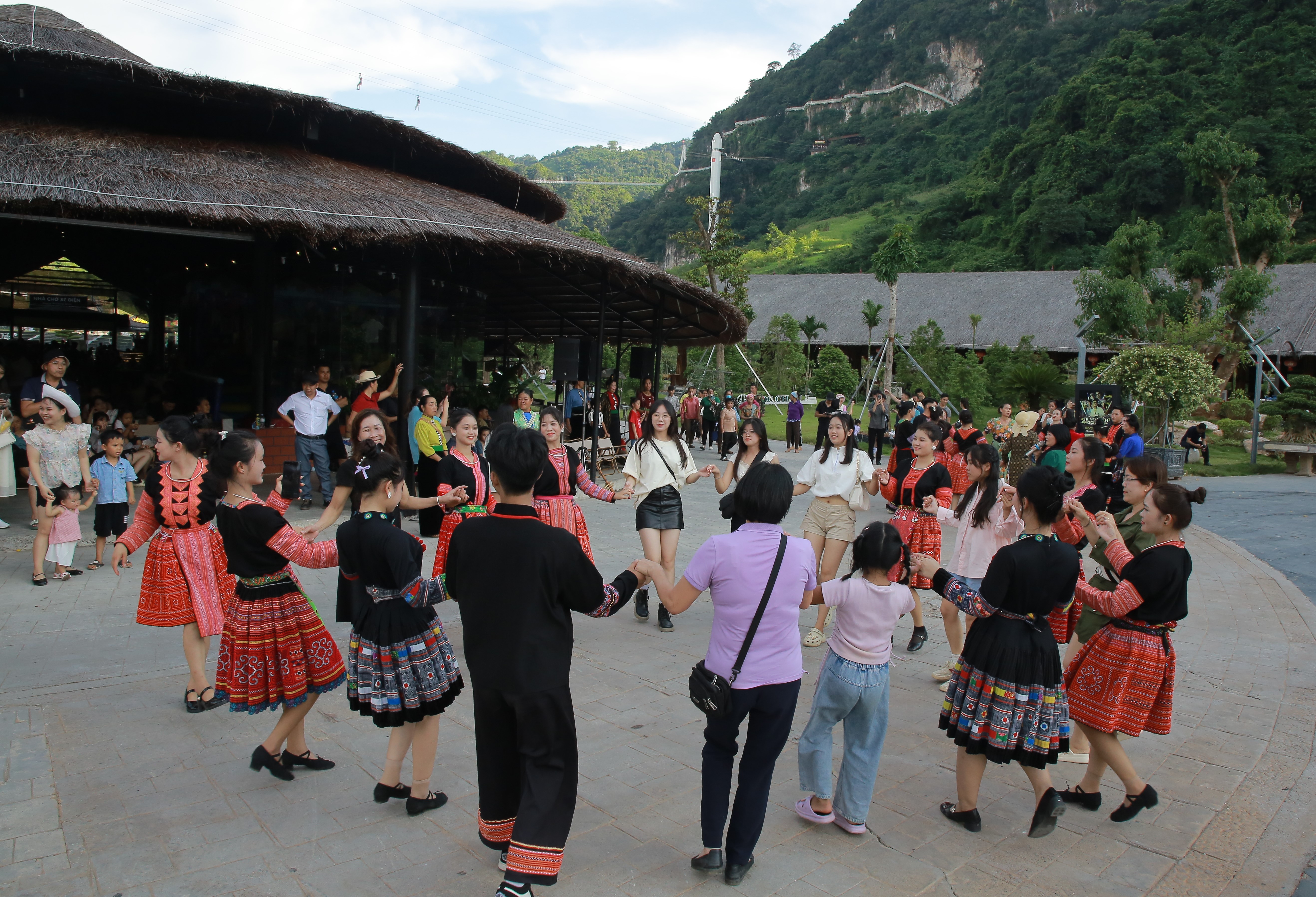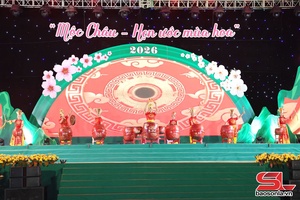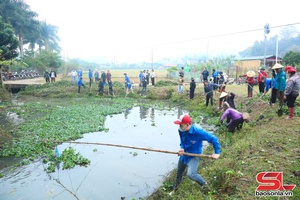

Tourists join a bamboo pole dance at the 2024 Moc Chau Culture and Tourism Week.
Moc Chau, the long-standing homeland of 12 ethnic groups, each with its own unique cultural traits, festivals, and customs, has leveraged these advantages by implementing various solutions to preserve and promote cultural values in connection with tourism. This not only meets the needs of visitors but also contributes to improving the quality of life and income for locals.
The distinctive and unique cultural identities of the ethnic groups have laid an important foundation for Moc Chau to develop community-based tourism. Currently, this type of tourism has been established in many hamlets such as Ang in Dong Sang commune, Doi in Tan Lap commune, Vat in Muong Sang commune, and Ta So 1 and Ta So 2 in Chieng Hac commune. This form of tourism allows visitors to immerse themselves in the traditional cultural space, and experience the daily life and traditional festivals of the ethnic groups, helping create highlights and diversify tourism products of Moc Chau.

Tourists at the Moc Chau Island Tourist Area.
A must-visit community-based tourism destination is Ang hamlet in Dong Sang commune. There, visitors can experience the distinctive and traditional culture of the Thai people, such as stilt houses, while learning about the history, cuisine, culture, and daily life of locals.
During their visit to the hamlet, visitors can explore the life of the Thai community, and their weaving and brocade; and visit the beautiful scenes in the hamlet with pine forests, strawberry farms, and lush green vegetable fields. The most memorable are participating in making dishes using the distinctive spices of the northwestern region, and joining in cultural exchanges, hand in hand with locals in the Xoe dance, which make visitors feel truly immersed in the space and locals there.
After Ang hamlet, visitors should visit Ta So 1 and Ta So 2 in Chieng Hac commune to experience the Mong people’s culture. The hamlets are home to more than 320 Mong households. Along with the cool climate and majestic natural scenery, visitors will have the opportunity to stay in traditional wooden houses nestled among peach and plum orchards.

A visitor learns how to make patterns on the traditional dresses of the Mong people.
In the coming time, Moc Chau district will continue to encourage locals to preserve the cultural features in tandem with developing attractive community-based tourist sites. Additionally, it will maintain the organisation of tourism promotion activities and events, such as the Moc Chau Culture and Tourism Week on September 2, the Het Cha Festival, the Rain-Praying Festival, the Fruit Harvest Festival, and the Vietnam Trail Marathon, to attract more visitors.
Cultural preservation in Moc Chau has supported its tourism industry, offering unique and memorable tourism products and experiences for visitors to Moc Chau plateau.















.jpg)
.jpg)
.jpg)


(2).jpg)

You have 500/500 characters left
Please enter 5 or more characters!!!